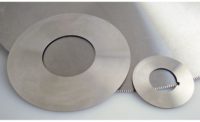Knives Out!
Automated systems are replacing humans to debone and cut chickens.

Humans are still the most effective machines at wielding knives in poultry plants.
As it turns out, it’s not easy to create a robot that can duplicate humans’ cutting and slicing motions in a real plant. But automated lines are becoming a close second.
“We did a limited trial in a plant last summer (2020) of our prototype robotic front-half shoulder deboning system. Unfortunately, it is not yet ready for commercial launch,” says Ai-Ping Hu, PhD, principal research engineer, Georgia Tech Research Institute (GTRI), based in Atlanta.
GTRI has been refining a robot that uses advanced imaging technology and a robotic cutting arm to debone chickens and other poultry.
“More automated lines are being used today, not what we think of as robots,” says Brian Kiepper, Ph.D., an associate professor at University of Georgia, based in Athens, Ga. “Automated lines are where people are being replaced by an automated process.”
Filling labor shortages
Why? The short labor supply. “The No. 1 reason is that demand for labor has gone up,” says Harshavardhan Thippareddi, Ph.D., John Bekkers Professor of Poultry Science, University of Georgia. “During COVID-19, people got sick, there weren’t vaccines at first and the person-to-person risk was greater in a processing plant. But even before that, labor-supply shortages were leading to interest in automation.”
COVID-19 highlighted the labor shortage but also opened the door to new processes. “In the U.S., labor costs are significant,” says Kiepper. “So, the industry has always looked at how to decrease labor costs vs. increasing yield.”
Automated systems can separate and cut wings, slice out dark meat and debone breast meat, usually at speeds of 7,500 bph, in a single line. New systems can process a larger weight range today, too.
Each bird is different, so with a mechanized system you may lose a little meat on the frame during deboning, Thippareddi says.
In fact, early automated systems just couldn’t compete with manual systems’ yield numbers, Kiepper says.
“But we’re getting closer now,” says Kiepper. “If plants put in automated systems, the potential yield loss still makes business sense” in the current labor market.
“The question for the industry is whether the loss in yield is comparable to labor supply issues,” Thippareddi says. “Day-to-day labor changes also lead to a loss in yield – time is a fixed cost as well.”
Another advantage of automation is eliminating repetitive tasks that can injure employees, says Kiepper.
Investing in technology
Fewer employees may be needed to operate automatic lines, but they need to be more tech savvy and comfortable with computer controls, Kiepper says.
“Automatic systems don’t need breaks or a day off, but they do need people to maintain their programming. Overall, they work well,” he adds.
Intelligent solutions or smart data can sort and grade birds in real time for the most efficient cuts.
Some operators may be hesitant to invest in the initial capital investment required. “Even an ounce of meat left on a bird can make a difference per frame over a week,” Kiepper says.
Processors are always looking for ways to increase line speeds, even up to double or more than the current rate. Future automated systems are expected to speed up cut-up lines, improve camera imaging or X-ray techniques and further develop smart communication amongst machines to accomplish this goal.
“Improvements and efficiencies in yield will push processors to automated systems,” says Thippareddi. “COVID has accelerated the transition for most processors, I think, to go toward automated systems.”
Looking for a reprint of this article?
From high-res PDFs to custom plaques, order your copy today!






